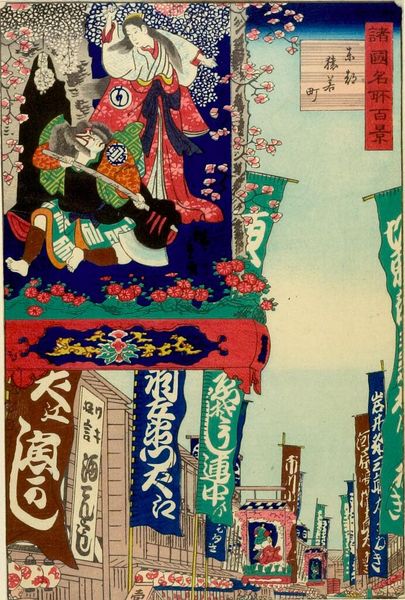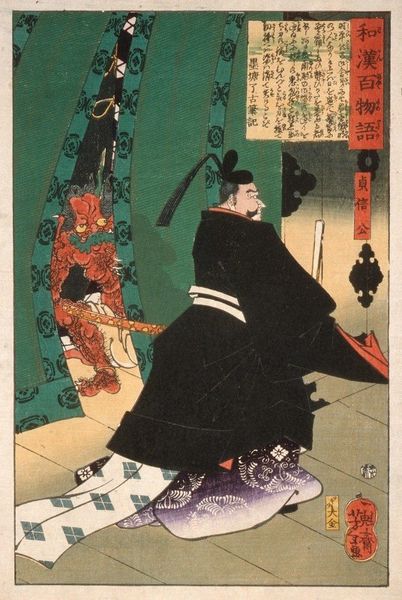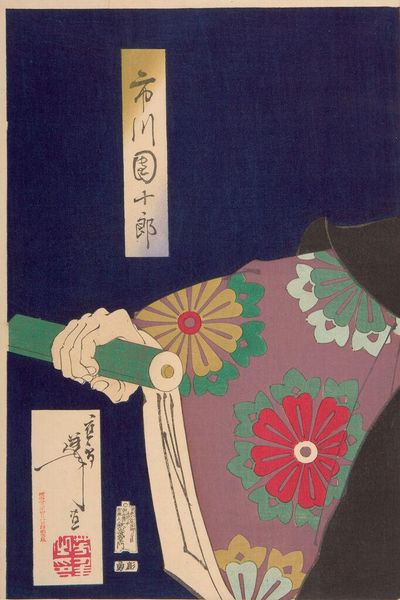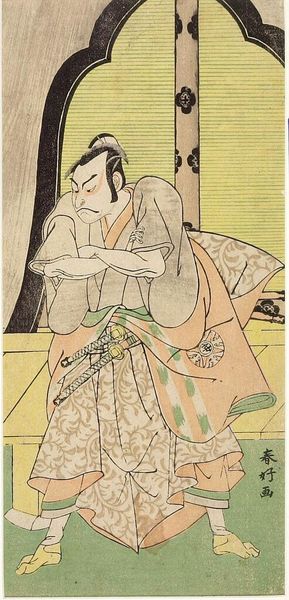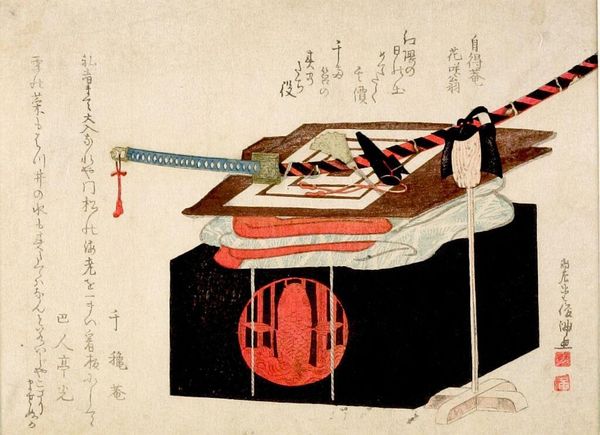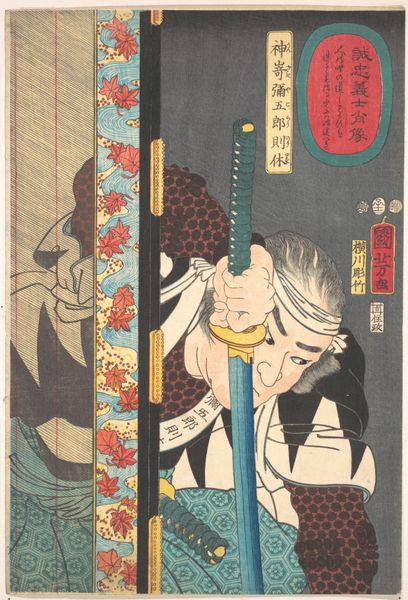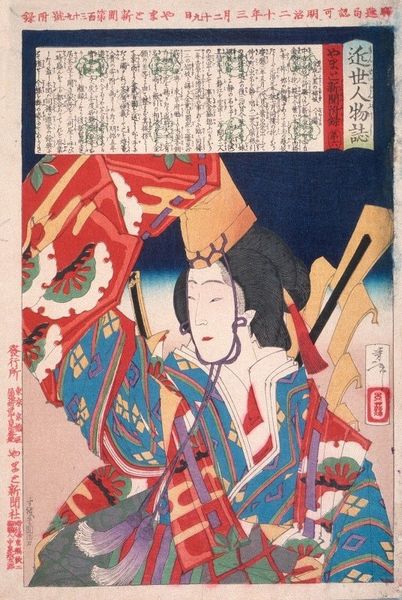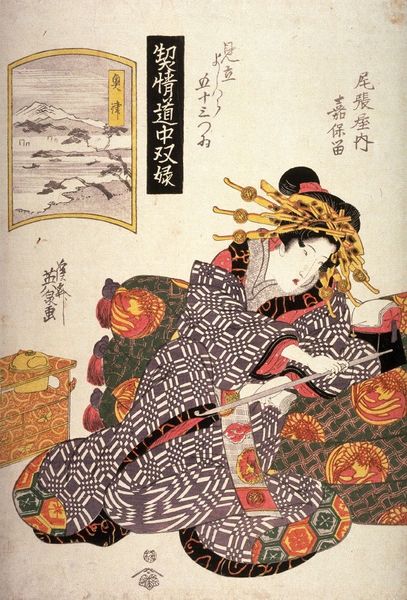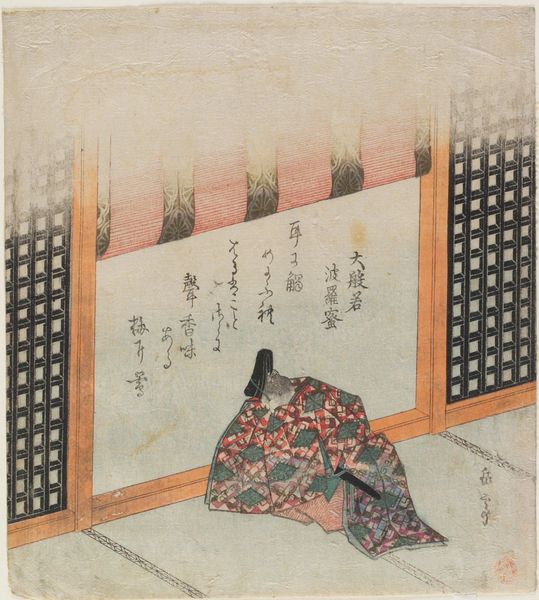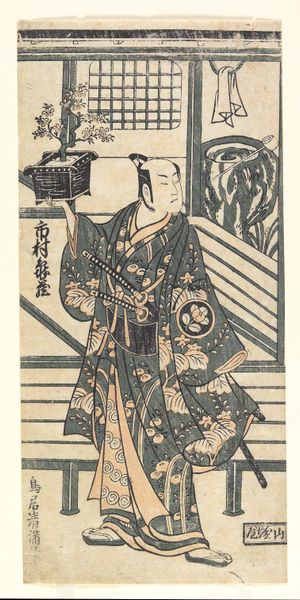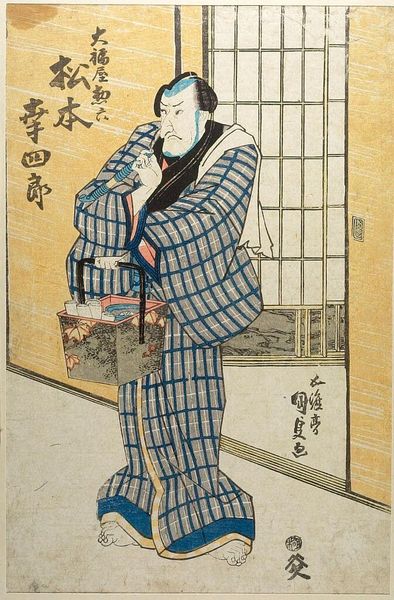
Copyright: Public Domain: Artvee
Editor: Here we have Tsukioka Yoshitoshi’s “Seventy-sixth Generation, Emperor Sutoku,” a print made with ink and watercolors around 1880. The figure is cloaked in shadow and positioned on the floor in what looks like a sorrowful scene. How do you interpret this work, especially considering its historical context? Curator: This piece strikes me as a profound commentary on power and its consequences. Yoshitoshi, working during a period of intense modernization in Japan, often used historical figures to reflect on contemporary issues. Emperor Sutoku was exiled due to political conflicts, becoming a symbol of marginalized figures. Notice the stark contrast between the Emperor’s dark robes and his pale, shaved head. Editor: I see it now. So, you’re suggesting that the artist used this exiled figure to perhaps comment on displacement during his time? Curator: Exactly. Yoshitoshi’s choice of subject may speak to anxieties around cultural disruption and loss of traditional power structures that accompanied modernization. The prints aren’t just beautiful images; they're embedded with political and social commentary, prompting viewers to question the human cost of progress and who gets left behind. The image questions what price is paid to remain an Emperor with so little space to occupy, the individual’s burden with broader political contexts. Does the setting evoke other possibilities for you? Editor: It does feel very claustrophobic, and brings an uncomfortable quiet to mind. I’d never have considered this political aspect. Thanks for highlighting these nuances. Curator: My pleasure. Remember to always ask: Whose stories are centered and whose are being erased or misrepresented? Art invites critical dialogues across time.
Comments
No comments
Be the first to comment and join the conversation on the ultimate creative platform.



